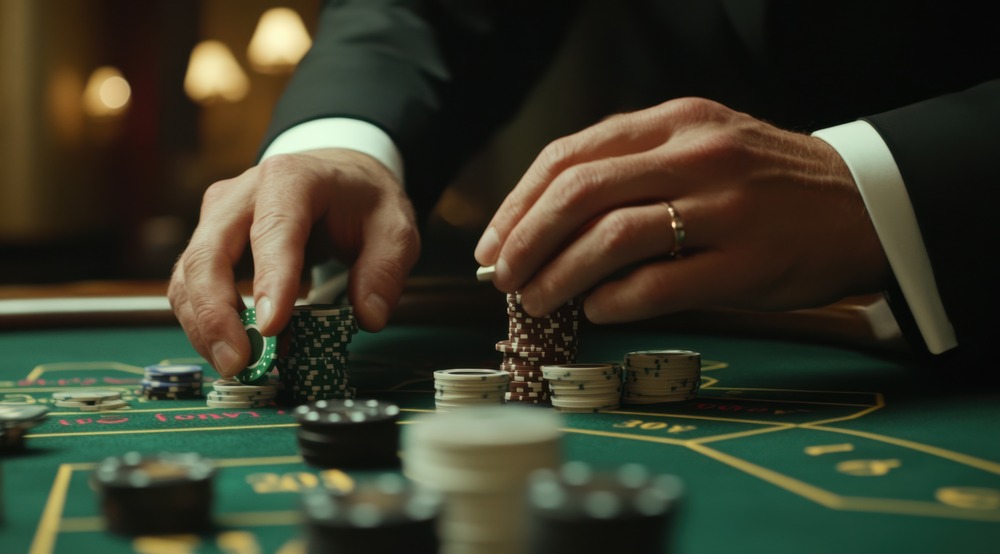The historical journey of Blackjack traces back to its origins in French gambling parlors, where it first emerged as a card game in the 18th century. Over time, Blackjack evolved and gained popularity in various countries, eventually becoming a staple in modern casinos worldwide. The game’s strategic elements and simple rules contributed to its enduring appeal among players seeking a mix of skill and chance.
Throughout its history, Blackjack underwent several transformations and variations, adapting to different cultural contexts and player preferences. These adaptations have shaped the game into the diverse forms we see today, from traditional Blackjack to modern variants like Spanish 21 and Pontoon. The evolution of Blackjack reflects a blend of mathematical probabilities, player strategies, and casino dynamics, highlighting its status as a strategic favorite in the realm of gambling.
By exploring the historical development of Blackjack, one can appreciate the game’s journey from its humble beginnings to its current position as a popular card game in casinos worldwide. The narrative of Blackjack’s evolution underscores the enduring appeal of this classic game and its ability to captivate players with its blend of skill and chance.
The Origins of Blackjack
The game known as Blackjack has its origins in 17th-century France, where it was initially called “Vingt-et-Un,” translating to twenty-one in French. It gained popularity among the French nobility in the 1700s and later spread to other parts of Europe.
In the early 1800s, French colonists brought Blackjack to America, where it underwent rule changes and adaptations. The term “Blackjack” emerged during the gold rush era in the United States due to a special bet that offered a higher payout for achieving a specific hand, typically an Ace of Spades and a black Jack.
This period marked the beginning of Blackjack’s transformation into the card game known today.
Evolution of the Game
The game of Blackjack, originally known as “21” in France, has evolved significantly over the centuries to adapt to changing times and player preferences. It spread to North America in the 19th century, where casinos introduced rule variations to attract players in response to evolving gambling laws. An important development was the introduction of a special payout for a hand with the ace of spades and a black jack, leading to the game being named Blackjack.
Over time, strategies and techniques for playing Blackjack have evolved, with players devising methods such as card counting and optimal betting strategies. These strategic advancements have influenced the way the game is played and approached by players.
Today, online casinos continue the evolution of Blackjack by offering new variations and innovations to maintain player interest and engagement worldwide. The game’s evolution reflects a combination of historical developments and ongoing adaptations to meet the demands of modern players and the gambling industry.
Influence of French Casinos
In the 18th century, French casinos significantly impacted the development of the game now known as Blackjack, originally referred to as “21.” By introducing rule variations and gameplay enhancements, French casinos played a key role in shaping the game.
One notable innovation was the introduction of the concept of “natural” blackjack, where a player holding an Ace of Spades and a black Jack (clubs or spades) received a higher payout. Moreover, French casinos implemented rules that allowed players to view one of the dealer’s cards, which influenced strategic decision-making during gameplay.
The naming of the game also reflects French influence, as “Vingt-et-Un,” translating to twenty-one, was the commonly used term in these establishments. These rule changes and adaptations laid the groundwork for the modern iteration of Blackjack enjoyed globally today.
Blackjack in the United States
Originating in France, Blackjack found its way to the United States in the early 19th century, where it gained popularity in various gambling establishments. Initially referred to as “21,” the game attracted American players with its straightforward rules and engaging gameplay.
In the United States, certain modifications were made to the game, such as the introduction of bonuses for specific card combinations like the Ace of Spades with a black Jack, leading to the game’s contemporary name, Blackjack.
Modern-Day Blackjack Variants
Blackjack has seen various modern-day variants introduced to provide players with different gameplay experiences. One such variant is “Spanish 21,” which uses a deck without 10s, increasing the house edge but compensating with more lenient rules.
“Double Exposure Blackjack” is another variant where both of the dealer’s cards are visible, offering players enhanced strategic decision-making opportunities.
“Pontoon,” a British version of Blackjack, features distinct terms and rules unique to the game.
“Blackjack Switch” allows players to exchange cards between two hands, adding a tactical dimension to the game.
These variants cater to diverse player preferences and contribute to the game’s enduring popularity among enthusiasts worldwide.
Conclusion
The game of Blackjack, originally known as “Vingt-et-Un,” has a long and storied history dating back to 17th-century France. Over the years, it has undergone various transformations and adaptations, eventually becoming a popular game in American casinos. Its enduring appeal can be attributed to a combination of strategic gameplay and elements of chance.
Whether you are an experienced player or a novice, Blackjack offers a unique blend of skill and luck that continues to attract players worldwide. Consider trying your hand at a game of Blackjack to experience firsthand the enduring allure of this classic card game.
We also recommend:

